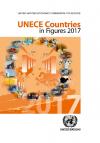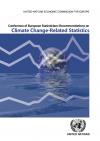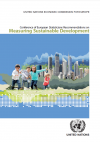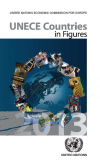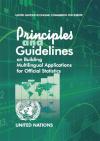Publications
Displaying Results 21 - 40 of 87
- English
The 2nd edition of the Road Map, published in February 2022, can be found here.
The publication provides guidance to national statistical offices on producing statistics for SDGs. It lays out what needs to be done, who are the stakeholders, and what are the opportunities for cooperation. The Road Map deals with
- English
UNECE Countries in Figures presents a profile of social and economic indicators for each of the 56 UNECE member countries.These profiles, prepared by the UNECE Statistical Division, are intended to be of interest to readers not necessarily familiar with statistical terminology or with interpreting statistical tables. A glossary of terms and list of references is available at the back of the
- English
The publication provides a recommendation and good practice guidance on a Generic Law on Official Statistics developed jointly with the European Free Trade Association and Eurostat as part of a broader UNECE statistical capacity building project financed through the United Nations Development Account. The guidance aims to support further development of the legal and institutional frameworks
- English
The idea of viewing individuals’ knowledge and abilities as an asset—as human capital—can be traced back to the 18th century. But human capital is hard to define and measure. Policymakers are calling for ways to understand and quantify human capital, in order to better understand what drives economic growth and the functioning of labour markets, to assess the long-term sustainability of
- English
UNECE Countries in Figures presents a profile of social and economic indicators for each of the 56 UNECE member countries.These profiles, prepared by the UNECE Statistical Division, are intended to be of interest to readers not necessarily familiar with statistical terminology or with interpreting statistical tables. A glossary of terms and list of references is available at the back of the
- English
These first ever Recommendations on Climate Change-Related Statistics are aimed at improving existing official statistics to support climate change analysis and reporting on greenhouse gas emissions under the Kyoto Protocol. The focus is not on scientific or meteorological data describing changes in weather and climate, but rather on statistics that are relevant for analysing climate change,
- English
The last two decades have seen a proliferation of methods and indicators to measure sustainable development. Many countries and organizations have adopted sustainable development indicator sets to track progress towards a sustainable society. However, the differences between the approaches remain large. Therefore, the Conference of European Statisticians set up in 2009 a joint UNECE/Eurostat/
- English
UNECE Countries in Figures presents a profile of social and economic indicators for each of the 56 UNECE member countries. It also includes information about certain territories of UNECE member countries for which separate data are available.These profiles, prepared by the UNECE Statistical Division, are intended to be of interest to readers not necessarily familiar with statistical
- English
The move towards global standardisation in models such as the Generic Statistical Business Process Model (GSBPM) and the Generic Statistical Information Model (GSIM), combined with progress on the development of standards for exchanging data and metadata, has drawn the attention of statistical software providers to the possibilities of exchanging software internationally. This has prompted the
- English
The degree of use of administrative sources in the statistical production process varies considerably from country to country, from those that have developed fully functioning register-based statistical systems, to those that are just starting to consider this approach.
Although several subject specific texts exist, there have, until now, been no general, international methodological guidelines
- English
UNECE Countries in Figures presents a profile of social and economic indicators for each of the 56 UNECE member countries. It also includes information about certain territories of UNECE member countries for which separate data are available.These profiles, prepared by the UNECE Statistical Division, are intended to be of interest to readers not necessarily familiar with statistical
- English
- English
This booklet provides a one-page profile of social and economic indicators for each of the 56 UNECE member countries. These profiles, prepared by the UNECE Statistical Division, will be of interest to readers not necessarily familiar with statistical terminology or with interpreting statistical tables.
- English
- English
- English
- English
In collaboration with national and international statistical experts, the UNECE Statistical Division publishes recommendations, guidelines and resources on a range of statistical topics.View publications: by topic by date of publication see
- English
Economic Globalization - A Challenge for Official Statistics (1.1 MB) (2008) Proceedings of the Joint EFTA/UNECE/SSCU SeminarEvaluating Efficiency of Statistical Data editing: General Framework (2000)


